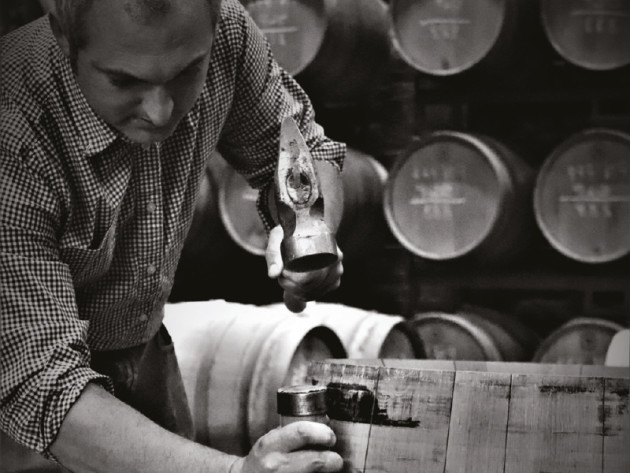
Danbury Ridge shows eastern promise
Essex clays are poised to lead the charge of quality English still wine. Andrew Catchpole reports from Crouch Valley’s Danbury Ridge.
The Essex region dubbed the Crouch Valley is in pole position to develop the next generation of English still Chardonnays and Pinot Noirs, but with a very different model to that of sparkling wines.
That is the assessment of John Atkinson MW, who, as consultant at Danbury Ridge, perhaps more than any other understands the soils and micro-climates of this fast-emerging, quality grape-growing region in one of the warmest, driest parts of England.
Fruit from the varied clay vineyards of central Essex has for a while now been making its way into English sparkling wines, not least in challenging vintages. Far-flung Camel Valley in Cornwall has been one such recipient, with Essex contributing big time to its 2012 sparkling rosé. Other wineries across southern England have similarly benefited from Crouch Valley grapes through more recent years.
Atkinson, though, believes the future of this region will and should be rooted in still wines, with quality Pinot Noir and Chardonnay to the fore. And his knowledge of the local smectite and illite clay-based variations of soils is dispensed with many references to the soil mosaics of Burgundy and Bordeaux. This includes estates such as Pétrus, as he elaborates as to why Essex’s expanding vineyards should provide the template for much future still winemaking.
“It’s important to get like-minded people into the region who want to actually grow grapes and make wine. The contract sparkling wine model works, and it works in Champagne, but when it comes to still wine production, particularly with the one variety, everything has to be much more intimate to see those differences,” says Atkinson.
“Those differences, that character, are actually what will make the wine, rather than blending to some quality point, or whatever style you are looking for.
“When it comes to Champagne and sparkling wine, it’s always a brand thing, a brand extension, but when it comes to still wines, it’s more like a land extension.”
That ‘land extension’ is more than clear when tasting barrel samples of Pinot Noir from across Danbury’s variously sited vineyards, with marked differences in character – of terroir – apparent in the young wines.
What is equally notable is how the combination of moderating maritime influence from the estuaries traversing Essex’s landscape, plus a buffering propensity of certain clay soils to the extremes of climate, have helped deliver a greater consistency in ripening than many had hoped possible.
Speaking about the wines produced since Danbury Ridge launched its first vintage in 2018 (planted 2014), winemaker Liam Idzikowski is clearly delighted with the vineyards at his disposal.
“I asked myself the question ‘if we do a vertical [tasting] after 10 years, how many gaps will there be?’,” he says, being committed to only making the best wines from good years. “But we’ve had five years now and I’ve been happy with every vintage so far.”
The secret of the quality of fruit coming out of Crouch Valley is becoming known, but a catch is that there are very few producers currently on the ground hereabouts. Atkinson believes that could now fast change, with an added benefit that entry into still wine production is not as onerous – time or money-wise – as sparkling wine.
“With sparkling wine the minimum has to be 40ha, really, to get it to work. But you can do something here [with still wine], probably plant 2-3ha, and if the results are good, you can plant a little bit more,” he says.
“I’d like to see that, to see it broken down and what we’ve probably revealed now, to ourselves, is that actually there is the variation in this area to break it down into small bits.”
Danbury’s wines are currently made in small quantities, with bottles finding their way on to some Michelin-starred lists, such as Hide and Sketch in London, plus the portfolio of a very few merchants like Cambridge-based NY Wines, and Berry Bros & Rudd. Small batches have also been exported, with Canada, Norway and Singapore among the recipients.
It’s an exciting start for such a young winery, representing such a young region. And, as Idzikowski concurs, “it’s still early days”, with the best only glimpsed so far, and surely much more of merit to come.
Keywords:
- wine
- Sparkling wines
- sparkling
- quality
- Sparkling Wine
- Pinot Noir
- MW
- Wines
- region
- one
- comes
- Essex
- Crouch Valley
- differences
- danbury
- danbury ridge
- winemaking “it’s important
- wine production particularly
- wine model works
- sparkling wine model
- contract sparkling wine




